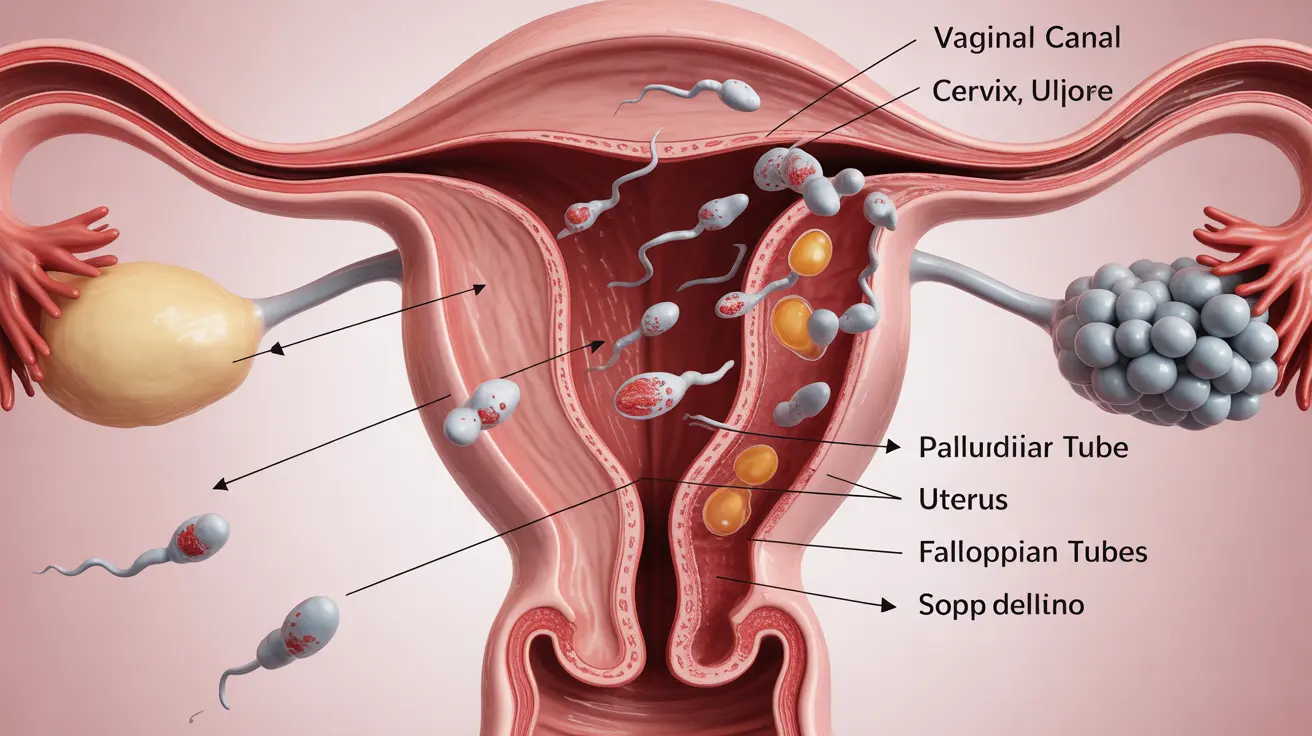Understanding how long sperm remains in the female body after intercourse is crucial for both family planning and reproductive health awareness. This comprehensive guide explains the journey of sperm in the female reproductive system and addresses common questions about sperm survival.
The Journey of Sperm After Intercourse
When ejaculation occurs during sexual intercourse, millions of sperm cells are released into the vaginal canal. While some fluid might leak out afterward, many sperm cells quickly begin their journey toward potential fertilization. The female reproductive system is specifically designed to help healthy sperm survive and reach their destination.
Sperm Survival Timeline in the Female Body
The lifespan of sperm inside a woman's body varies depending on several factors, but generally follows this timeline:
Inside the Vaginal Canal
In the vaginal canal, sperm typically survive for about 6-12 hours. The vagina's acidic environment naturally limits sperm survival, acting as a natural selection process for the strongest sperm cells.
In the Cervix and Uterus
Once sperm reaches the cervix and uterus, survival time increases significantly. In these environments, sperm can live for up to 3-5 days under optimal conditions. The cervical mucus provides protection and nourishment for the sperm cells.
In the Fallopian Tubes
Sperm that reach the fallopian tubes may survive up to 5 days, especially during the fertile window. This extended survival period increases the chances of meeting an egg for fertilization.
Factors Affecting Sperm Survival
Several key factors influence how long sperm can survive inside a woman's body:
- Cervical mucus quality and consistency
- Body temperature
- Hormonal environment
- Overall reproductive health
- Timing in relation to ovulation
- Individual sperm health and motility
Understanding Post-Intercourse Fluid Loss
It's completely normal for some fluid to leak out after intercourse. This doesn't mean fertilization can't occur, as many sperm cells quickly enter the cervix. The fluid that leaves the body is primarily made up of:
- Seminal fluid
- Vaginal secretions
- Non-viable sperm cells
Sperm Survival Outside the Body
Outside of the female reproductive tract, sperm cells have a very limited lifespan:
- In air: Only a few minutes to hours
- In water: Generally less than an hour
- On surfaces: Usually die within minutes due to exposure
Frequently Asked Questions
How long does sperm stay inside a woman's body after intercourse? Sperm can survive inside a woman's body for up to 5 days under optimal conditions, though most sperm cells die within 1-2 days. The survival time largely depends on the environment within the reproductive tract and the timing relative to ovulation.
Why do some fluids leak out of the vagina after sex but sperm can still cause pregnancy? While some fluid naturally leaves the vagina after intercourse, millions of sperm cells quickly travel into the cervix and uterus. The fluid that leaks out is primarily seminal fluid and contains only a fraction of the total sperm cells.
How long can sperm survive inside the female reproductive tract to fertilize an egg? In ideal conditions, particularly in fertile cervical mucus, sperm can survive up to 5 days inside the female reproductive tract. This extended survival period increases the possibility of fertilization if ovulation occurs during this time.
Does sperm survive outside the body or on surfaces like toilet seats or in water? Sperm cells are very fragile outside the body and typically die within minutes to hours when exposed to air, water, or surfaces. They require specific temperature and environmental conditions to survive.
What factors affect how long sperm live inside a woman's body and their chances of fertilization? The main factors affecting sperm survival and fertilization chances include cervical mucus quality, body temperature, hormonal environment, timing of ovulation, overall reproductive health, and the health of the sperm cells themselves.




